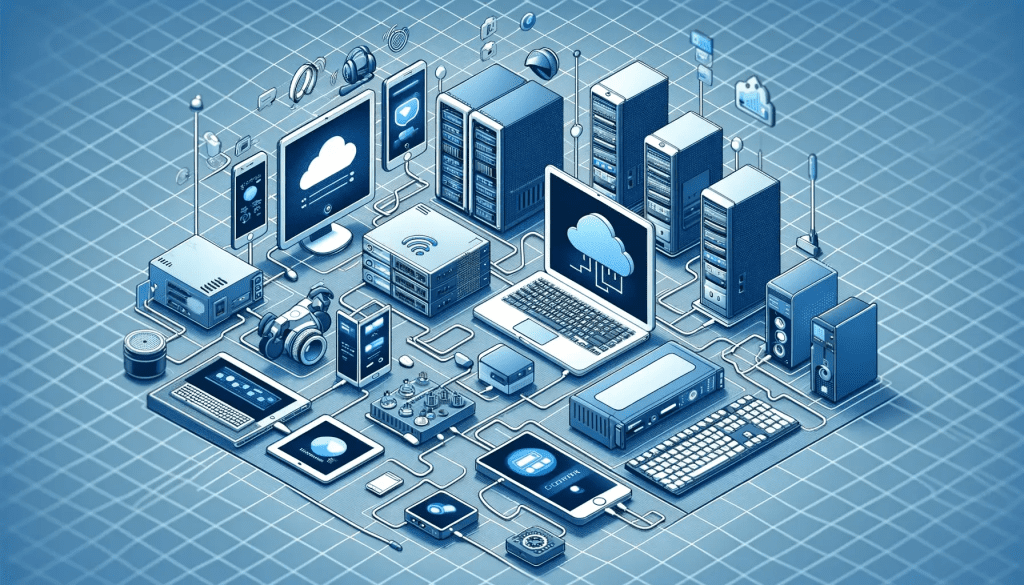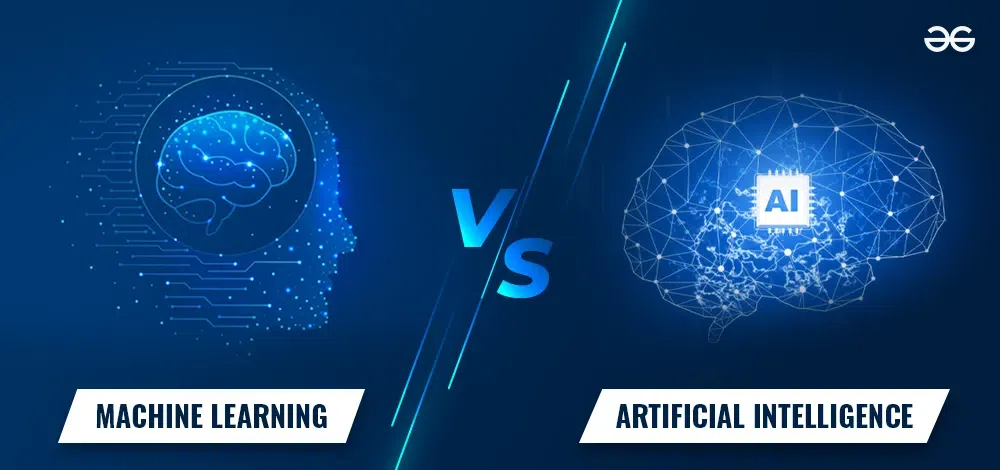Introduction
Artificial Intelligence (AI) and Machine Learning (ML) are no longer futuristic concepts; they’re here and transforming our world. Meanwhile, the Internet of Things (IoT), blockchain technology, and big data are revolutionizing industries by providing unprecedented connectivity, security, and insights. But what’s truly exciting is how these technologies complement each other, creating a synergy that drives innovation and efficiency across various sectors.

Understanding AI and ML
Definition and Key Concepts
AI is the simulation of human intelligence in machines, designed to think and learn like humans. ML, a subset of AI, involves the use of algorithms and statistical models to enable machines to improve their performance on tasks through experience.
Differences Between AI and ML
While AI encompasses a broad range of activities, including reasoning, problem-solving, and understanding natural language, ML focuses specifically on the ability of systems to learn and adapt without explicit programming.
Applications in Various Industries
AI and ML are applied in healthcare for diagnostics, in finance for fraud detection, in retail for personalized recommendations, and in many other fields, demonstrating their versatility and transformative potential.
The Role of IoT in Modern Technology
Definition and Scope of IoT
The Internet of Things (IoT) refers to the network of physical devices embedded with sensors, software, and other technologies to connect and exchange data with other devices and systems over the internet.
Key Components of IoT
IoT systems typically include sensors, connectivity, data processing, and user interfaces. These components work together to collect and analyze data, enabling real-time monitoring and control.
Current Applications of IoT
From smart homes and wearable devices to industrial automation and smart cities, IoT applications are diverse, enhancing efficiency, safety, and convenience in various aspects of life and work.

Blockchain Technology Explained
Basics of Blockchain
Blockchain is a decentralized digital ledger that records transactions across many computers so that the record cannot be altered retroactively without altering all subsequent blocks.
How Blockchain Works
Each block in a blockchain contains a list of transactions, and once a block is completed, it is added to the chain in a linear, chronological order. This process ensures transparency and security.
Applications of Blockchain
Blockchain is used in cryptocurrencies like Bitcoin, supply chain management, voting systems, and more, providing secure and transparent ways to record and verify transactions.

Big Data: An Overview
Definition and Importance of Big Data
Big data refers to the vast volumes of data generated every day from various sources. Its importance lies in the insights and knowledge that can be derived from analyzing this data.
Characteristics of Big Data
Big data is characterized by the four Vs: Volume (large amounts of data), Variety (different types of data), Velocity (fast data processing), and Veracity (accuracy and reliability of data).
Current Uses of Big Data
Big data is used in predictive analytics, customer behavior analysis, operational efficiency improvement, and more, providing valuable insights that drive decision-making.
The Intersection of AI, ML, and IoT
How AI and ML Enhance IoT
AI and ML can analyze the data collected by IoT devices, providing actionable insights and enabling smarter, more autonomous systems. For instance, in smart homes, AI algorithms can learn user preferences and optimize energy usage.
Examples of AI and ML in IoT Applications
Examples include predictive maintenance in manufacturing, where ML algorithms analyze data from sensors to predict equipment failures, and autonomous vehicles, where AI processes data from numerous sensors for safe navigation.
Benefits of Combining AI, ML, and IoT
Combining these technologies leads to more intelligent, responsive, and efficient systems, reducing costs, improving performance, and enhancing user experiences.
Blockchain and AI/ML Synergy
How AI and ML Can Improve Blockchain
AI and ML can enhance blockchain by improving security, optimizing transaction processes, and providing predictive analytics. For example, AI can detect fraudulent activities in blockchain transactions.
Real-World Applications of AI/ML with Blockchain
Applications include secure data sharing in healthcare, where blockchain ensures data integrity, and AI analyzes patient data for better treatment outcomes, and in supply chain management, where blockchain ensures transparency, and AI optimizes logistics.
Future Prospects
The integration of AI, ML, and blockchain holds promise for creating more secure, efficient, and transparent systems across various industries, driving innovation and growth.
Big Data Meets AI and ML
Role of AI and ML in Analyzing Big Data
AI and ML algorithms are essential for processing and analyzing big data, uncovering patterns, trends, and insights that would be impossible to detect manually.
Examples of AI and ML in Big Data Analytics
Examples include fraud detection in finance, where ML algorithms analyze transaction patterns to identify anomalies, and personalized marketing, where AI analyzes customer data to deliver targeted campaigns.
Benefits of This Integration
The integration of AI and ML with big data analytics leads to more accurate predictions, better decision-making, and enhanced operational efficiency, providing a significant competitive advantage.
The Combined Impact on Industries
Healthcare
In healthcare, the synergy of AI, ML, IoT, blockchain, and big data enables personalized medicine, predictive diagnostics, and efficient management of health records, improving patient outcomes and operational efficiency.
Finance
In finance, these technologies enhance fraud detection, automate trading, provide personalized financial advice, and ensure secure transactions, transforming the financial landscape.
Manufacturing
In manufacturing, the combination of IoT sensors, AI, and ML enables predictive maintenance, quality control, and optimized production processes, leading to reduced downtime and increased efficiency.
Transportation
In transportation, these technologies power autonomous vehicles, optimize logistics and supply chain management, and enhance traffic management systems, improving safety and efficiency.
Challenges and Considerations
Security Concerns
While these technologies offer numerous benefits, they also pose security risks, such as cyberattacks on IoT devices or blockchain networks, requiring robust security measures.
Data Privacy
The collection and analysis of vast amounts of data raise concerns about privacy and data protection, necessitating strict regulatory compliance and ethical considerations.
Technical Challenges
Integrating these technologies involves technical challenges, including interoperability issues, the need for high computational power, and the complexity of implementation.
Future Trends and Predictions
Evolution of AI, ML, IoT, Blockchain, and Big Data
These technologies will continue to evolve. With advancements in AI and ML driving more sophisticated applications, IoT devices are becoming more interconnected. Blockchain are providing more secure solutions, and big data analytics offering deeper insights.
Emerging Applications
Emerging applications include smart cities, where these technologies work together to optimize urban infrastructure. Another use case are advanced healthcare solutions, where personalized treatments and predictive diagnostics become the norm.
Potential Impacts on Society
The synergy of these technologies will have profound impacts on society. This will enhance quality of life, driving economic growth, and addressing global challenges such as climate change and healthcare accessibility.
Conclusion
The integration of AI, ML, IoT, blockchain, and big data represents a powerful convergence of technologies. This synergy is transforming industries, driving innovation, and creating opportunities for more efficient, secure, and intelligent systems. As these technologies continue to evolve, their combined impact will only grow. If you’re interested in staying ahead in this technological wave, consider enrolling in an AI ML course to deepen your understanding and skills in these transformative fields.
FAQs
How do AI and ML enhance IoT?
AI and ML enhance IoT by analyzing data collected from IoT devices to provide actionable insights and optimize operations.
What are the benefits of combining blockchain with AI?
Combining blockchain with AI enhances security, optimizes processes, and provides predictive analytics, improving efficiency and transparency across various applications.
How does AI contribute to big data analysis?
AI contributes to big data analysis by using algorithms to uncover patterns, trends, and insights. This enables better decision-making and predictive analytics.
What industries benefit most from these technologies?
Industries such as healthcare, finance, manufacturing, and transportation benefit significantly from the integration of these tech.
What are the future trends in AI, ML, IoT, blockchain, and big data?
Future trends include more sophisticated AI and ML applications, increased interconnectivity of IoT devices, more secure blockchain solutions, and deeper insights from big data analytics, driving innovation and efficiency across various sectors.
Check out more AI tool.
Elevate Guest Experience with RoomGenie
Invest your money effortlessly 🚀 Try the NewsGenie tool!
